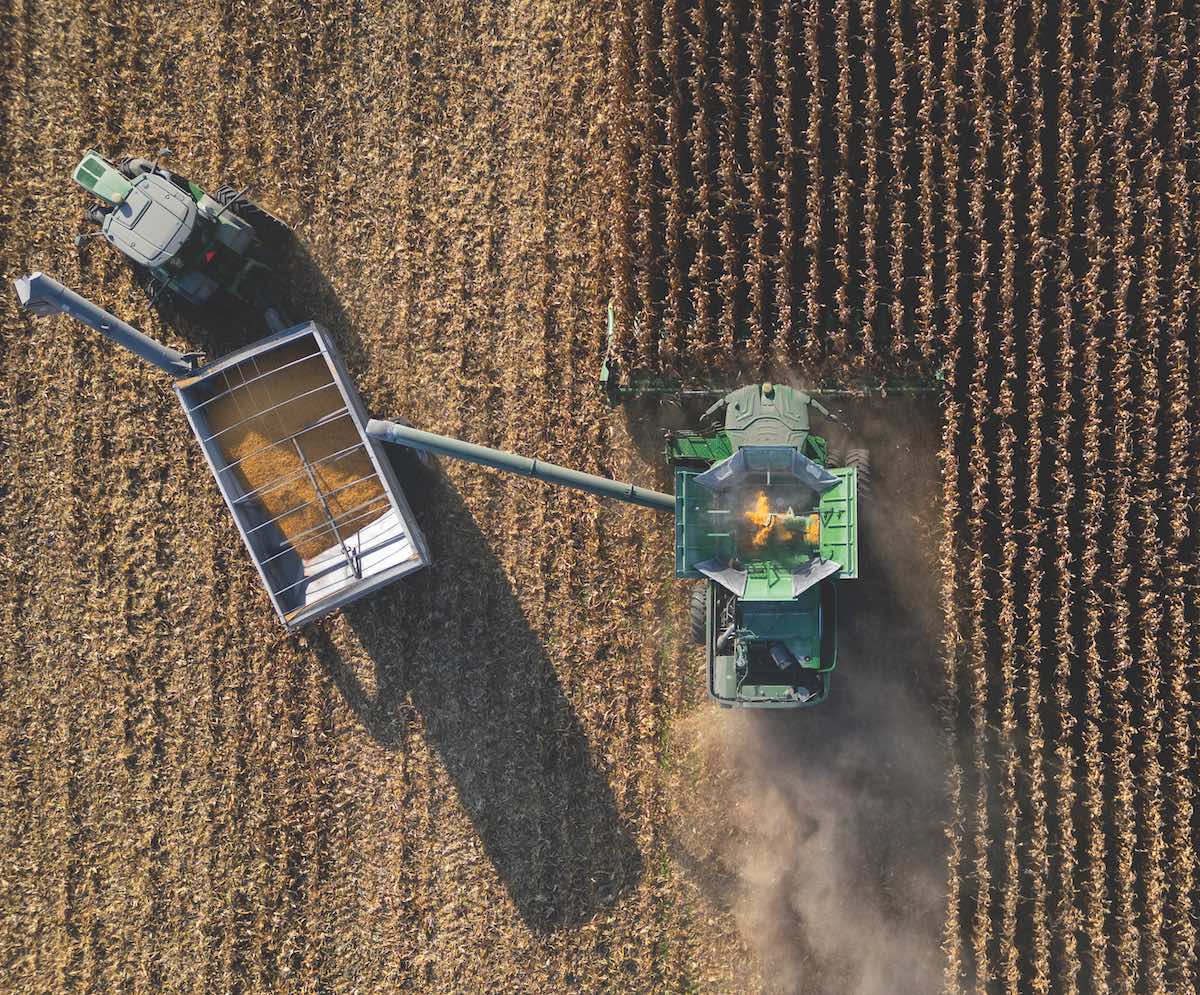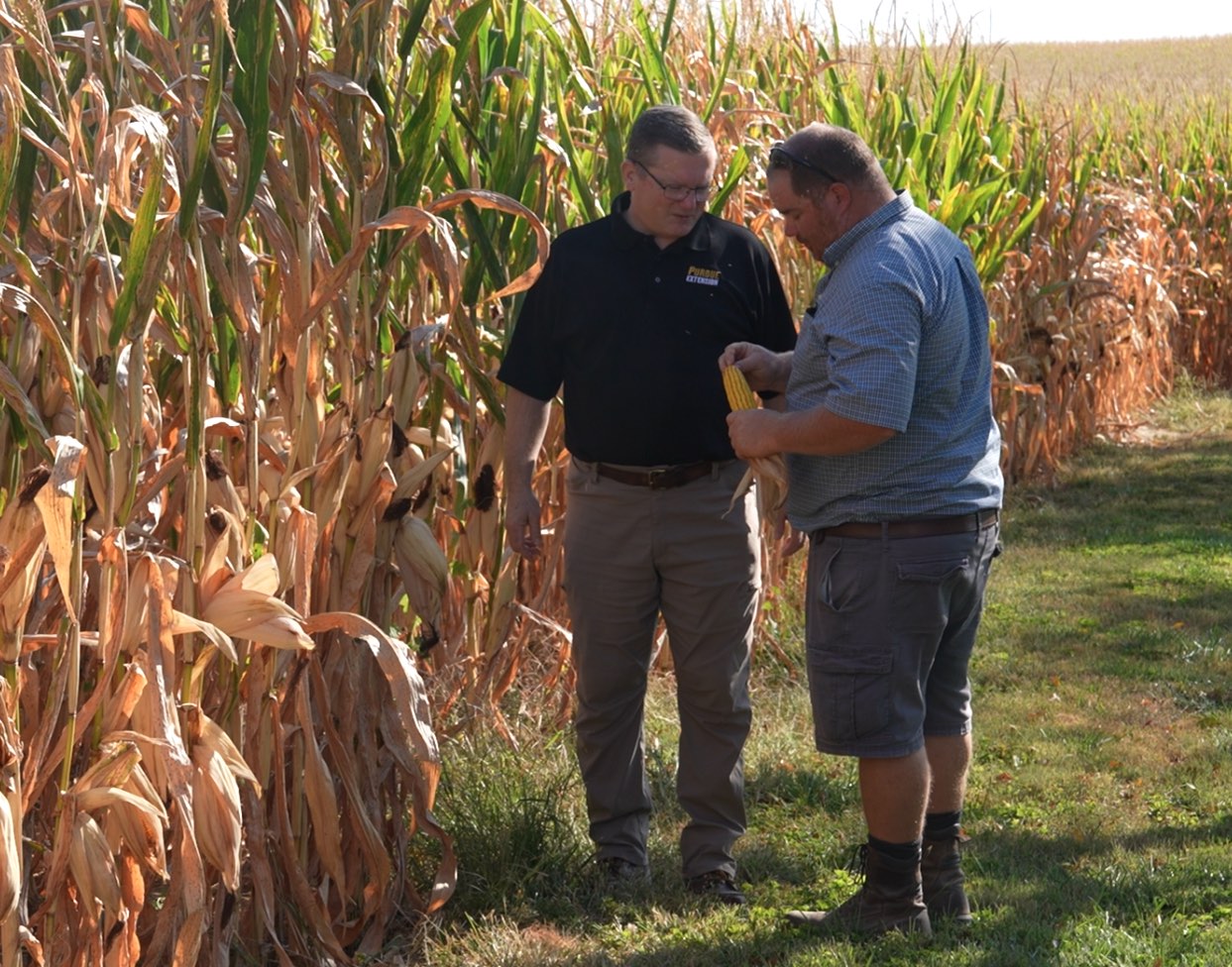Purdue on the Farm
Grower Matthew Tobias and Extension’s Scott Gabbard continue a tradition of partnership between Purdue Extension and the Steinbarger family.
Purdue Extension’s Scott Gabbard had known Mike and Anngie Steinbarger since their daughters Hayley and Michelle — now married with children of their own — were youngsters. He has known Michelle’s husband, Matthew Tobias, since Matthew was in 4-H. Gabbard joined the family and the entire community in grieving the loss of their patriarch, Mike, during planting season this spring.
Gabbard has built a relationship with the Edinburgh, Indiana, farm family. They grow roughly 2,600 acres across four operations that involve Anngie, a past member of the Indiana Soybean Alliance board; Hayley and Dan Clark (along with their own operation, which includes Dan’s father Bill Clark and brother, Amos Clark); Michelle and Matthew Tobias; and Anngie’s nephew, John Burbrink. In addition to corn, soybeans and hay, the family has a cattle operation, Smooth Stone Cattle Company. Each family member also works off-farm.
“We all control our own ground and own decisions, but we share equipment and share in labor,” Matthew Tobias explains.
Gabbard now heads Purdue on the Farm, which he describes as “the interaction between the farmer, the Extension educators out in the field, and Extension faculty and researchers on campus.” The comprehensive program also involves the Purdue Agricultural Centers (PACs) and Agronomy Center for Research & Education (ACRE) with Conservation Cropping Systems Initiative, the Indiana Soybean Alliance and the Indiana Corn Marketing Council.
Purdue on the Farm connects Extension with growers and partners in four ways: through client surveys; crop scouting, in which Extension educators assess a corn or soybean field three times a year; demonstrating cropping system products, hybrids, management practices and other factors that producers are curious about; and on-farm research.
After scouting reports are sent to the farmer, they are aggregated and shared statewide. In the College of Agriculture, the scouting results inform prescriptive research trials. For Tobias, who works for a crop insurance company (along with Anngie, Hayley and Michelle), the data is also valuable in his claims work.
Gabbard calls Purdue on the Farm, now in its second full year, “an intentional reset of our relationship with
the farmers.”
Instead of researchers generating all the ideas, the crop surveys are prompting conversations between farmers and Extension educators — “What happens if we do x, y or z?” — some of which may continue across growing seasons. “Extension is always about relationships, but this takes a higher level of commitment,” Gabbard says.

Purdue on the Farm is a collaborative effort across many agricultural entities, but relationships are at its core.
As Purdue Extension continues to strengthen its monitoring capacity with the use of evolving technology, some research trials are also getting underway.
“Mike was a big proponent of testing stuff,” Tobias says.“He and Scott got along really well for that. They thought a lot alike.”Gabbard is working with Tobias and Dan Clark on a Balansa clover trial at the farm in which corn is planted directly into the cover crop. “We’re going to see if there’s any yield drag or not. It would be awesome if there’s actually a yield increase, because clover is a nitrogen provider,” Gabbard says. “With on-farm research, we have the flexibility to go down a lot of rabbit holes.”
“Scott knows that Mike was a big advocate of cover crops,” Tobias says. “He approached us about trying something different that might help our soils and our crop. We’re excited to see if the clover does provide any benefit for the corn crop growing there, if we can tell anything come harvest time.
“I don’t know if we will or not,” he adds. But either way, Tobias says he will continue to welcome interaction with Extension through Purdue on the Farm. “It’s more seeing what works and more importantly, what doesn’t work for our operation,” he says. “I feel Scott wants to work with us on things we can easily transition into our operation and yearly protocols.”

Program Impact
- Based on scouting reports, 79% OF FARMERS THAT THEY ADOPTED A NEW PRACTICE OR TECHNOLOGY after receiving Extension recommendations.
- As a result of the new practice, farmers reported FINANCIAL IMPROVEMENT: INCREASED DOLLAR RETURN PER ACRE (40%), and REDUCED COSTS PER ACRE (40%).
- Farmers said INDEPENDENT RESEARCH ON COVER CROPS (85%), FERTILITY (69%) AND CONSERVATION PRACTICES (54%) would be most impactful to their operations.
